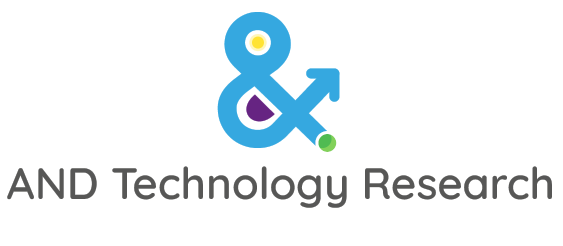PRESS RELEASE
Family business has designs on the future
[Sassy_Social_Share]
PRESS RELEASE
Family business has designs on the future
[Sassy_Social_Share]
Published by: Electronics Weekly

UK design consultancy AND Tehcnology was founded in 1980 and is run by a mother-daughter team, who talk to Caroline Hayes.
Encouraged to join the computing club at the technical high school she attended, Dr Valerie Lynch was working with early punch cards when she decided on her career path.
She studied computing and mathematics, where she was the only woman on the course, and went on to earn a PhD at Cambridge University in management and software.
During the course of her career at Gould Electronics, she lead the systems programming department before moving to technical computing, where she learned about digital telecom exchanges. “Then the 1980 recession hit, and I was working in Germany, during the day on digital telephones and in the evening at the micro computer video centre,” she recalls.
Then the 1980 recession hit, and I was working in Germany, during the day on digital telephones and in the evening at the micro computer video centre
Valerie Lynch, Founder
Seeing the lack of any kind of company she wanted to work in, she started her own. Called AND Technology Research, it is a technology and product development consultancy, based in Essex. “It offers electronic design, PCB layout, oversees accounting and designs,” explains Lynch.
AND Tech partners with companies like Renesas and Microchip at all stages of product lifecycle, from design and testing, through to manufacture and commercialisation.
At weekends, Lynch’s daughter Nicola worked there from the age of 16, providing IT support. After completing a PhD in mathematics at the University of Reading, Nicola Thorn joined the company as an executive engineer and became executive director in 2019. Now, Lynch is stepping down as CEO but will continue to be active in the company as chairman.
“I founded AND at the start of the microcontroller revolution and I am now excited for the next phase – the digital revolution,” she said.
I founded AND at the start of the microcontroller revolution and I am now excited for the next phase – the digital revolution
Valerie Lynch, Founder
Partners and projects
Thorn has plans for the company, focusing on new technology platforms. “I’m looking forward to finding new innovations,” she said. “Ones that are cost-effective and easy to build up, rather than products that can’t be scaled.”
She is looking for “disruption projects”. Areas of interest are the energy and medical sectors – “building technology for good and technology that is good”, as Thorn puts it, citing sustainable, battery-less devices as one example.
The company is a platinum partner for Renesas Electronics, where it works with the microprocessor giant to develop projects using new technologies, including its silicon on thin buried oxide (SOTB) process technology.
“If they have new technologies or projects to develop, they come to use,” explains Lynch.
Being a smaller consultancy allows the company to build an ecosystem around the customer, acting as partners in technology and manufacturing she continues. It is a cost-effective model and easy to build up, offering educational tools, rather than products which cannot be scaled up.
One of its latest projects is a PLC module, created in partnership with Renesas to act as proof-of-concept for smart meters, building management systems and smart strete lighting. It uses RE processors based on SOTB are characterised by low active and standby power, and low voltage (1.2V) 64MHz CPU to increase battery life by up to a factor of five. It also reduces battery size requirements and can even eliminate them with the use of energy harvesting for self-powering IoT devices.
Building technology for good and technology that is good
Nicola Thorn, CEO
One of the tools the consultancy uses is the c2 technology product development platform. This is a scalable configurable system of software and hardware blocks for IoT systems. The development platform is designed to prevent typical obstacles to product development, such a reducing development costs for baseline functionality, expanding timelines due to redevelopment or under-tested systems.
The sensor-based data collection system is modular, to be configured for an application, with minimum NRE, to gather relevant data for an application. At the design and prototyping stage, being able to scale the product is the end goal, which reduced redevelopment time and costs. Once a proof-of-concept model is created, the hardware and software blocks can be assembled and prototypes can be produced.
IoT energy
The company has also worked with energy provider Centrica to pilot its AI-powered energy management systems, AEMS. The intuitive dashboard and mobile app is designed to help SMEs manage energy usage by visualising energy consumption patterns and intelligence, providing insights into energy use within a business.
The trial with Centrica is being carried out as part of the non-domestic Smart Energy Management Innovation Competition (NDSEMIC) funded by the UK government’s Departement for Business, Energy and Industrial Strategy (BEIS) and supported by the Carbon Trust.
This is a very British story – rather understated – but lift the lid and there is a great deal of expertise and technical knowledge that has been accessed by customers for four decades.
Today the consultancy employs 16 people. I asked, “What is the male/female ratio in the workplace?”. After a quick mental count, both Lynch and Thorn confirmed “It’s a 50/50”.







